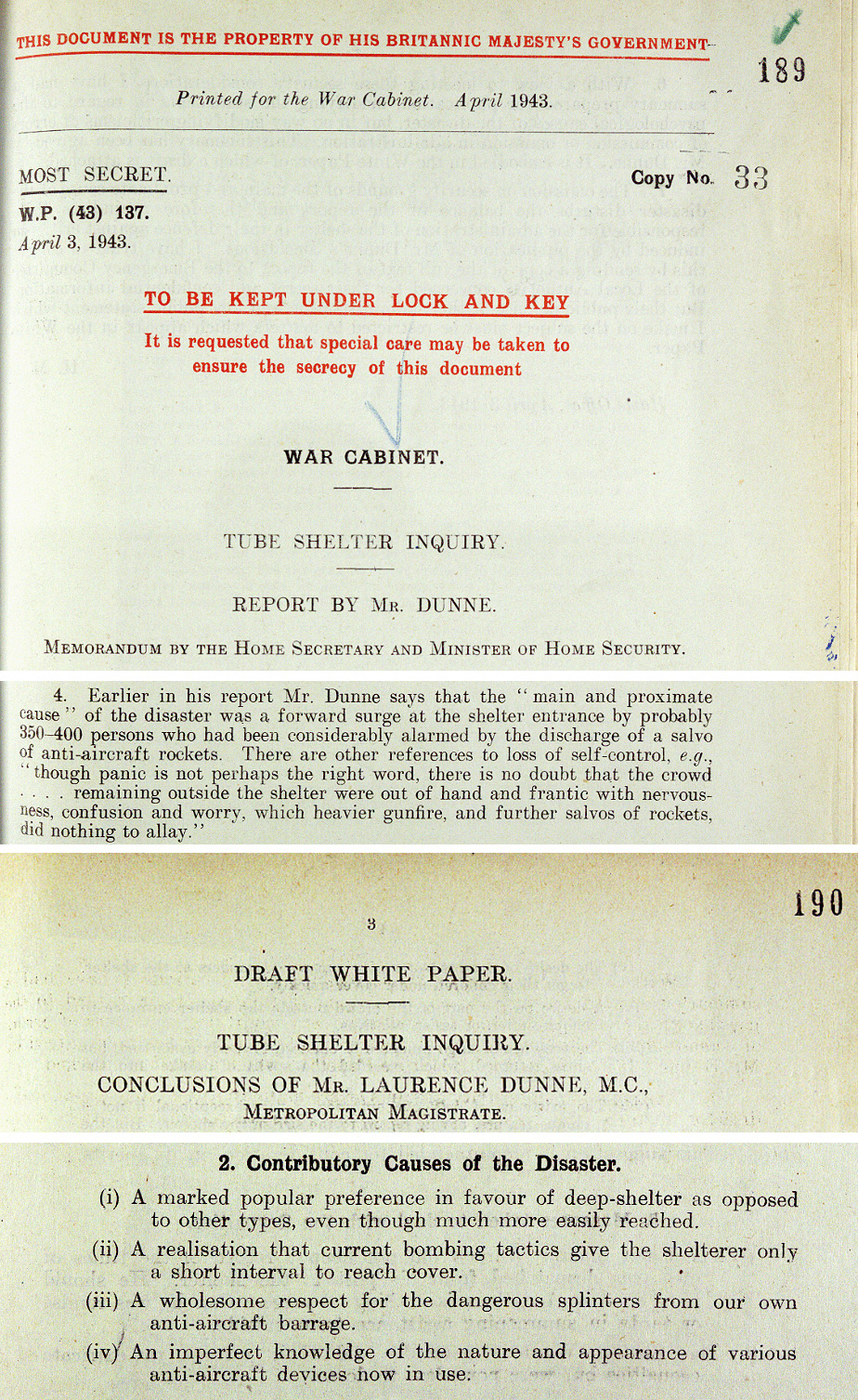
Extracts from the Bethnal Green Tube Shelter Disaster Inquiry Report, 1943, Catalogue ref: CAB 66/35
By the end of the War, German bombing had killed just over 60,000 people in Britain.
- What were the main conclusions in the report about the causes of this Bethnal Green tube disaster?
- Why do you think this document is titled ‘Most Secret’ to be kept under lock and key?
- Why did the War Cabinet decide not to publish the full findings about the Bethnal Green Tube Shelter disaster, Catalogue ref: CAB 65/34
- What did they fear would happen if the Germans found out about it?
- What statement did they make in the House of Commons about the disaster?
Transcript
THIS DOCUMENT IS THE PROPERTY OF HIS BRITANNIC MAJESTY’S GOVERNMENT
Printed for the War Cabinet. April 1943
MOST SECRET
W.P. (43) 137.
April 3, 1943.
TO BE KEPT UNDER LOCK AND KEY
It is requested that special care may be taken to ensure the secrecy of this document
WAR CABINET.
THE SHELTER INQUIRY.
REPORT BY MR. DUNN.
MEMORANDUM BY THE HOME SECRETARY AND MINISTER OF HOME SECURITY.
4. Earlier in his report Mr. Dunne says that the “main and proximate cause” of the disaster was a forward surge at the shelter entrance by probably 350-400 persons who had been considerably alarmed by the discharge of a salvo of anti-aircraft rockets. There are other references to loss of self-control e.g., “though panic is not perhaps the right word, there is no doubt that the crowd… remaining outside the shelter were out of hand and frantic with nervousness, confusion and worry, which heavier gunfire, and further salvos of rockets, did nothing to allay.”
…
DRAFT WHITE PAPER.
TUBE SHELTER INQUIRY.
CONCLUSIONS OF MR. LAURENCE DUNNE, M.C.,
METROPOLITAN MAGISTRATE.
2. Contributory Causes of the Disaster.
(i) A marked popular preference in favour of deep-shelter as opposed to other types, even though much more easily reached.
(ii) A realisation that current bombing tactics give the shelterer only a short interval to reach cover.
(iii) A wholesome respect for the dangerous splinters from our own anti-aircraft barrage.
(iv) An imperfect knowledge of the nature and appearance of various anti-aircraft devices now in use.
